A couple of months ago I went to TOEI UZUMASA EIGAMURA, which is both a theme park and an active movie set. The studio has been around since about 1955. But, with the decline in popularity of traditional samurai films the studios had to make up for some of that lost yen. In 1975 they built the theme park portion: A traditional samurai village, with actors who play the parts of samurai, ninja, villagers, etc. You can go there and see how samurai films are made, take pictures with samurai, and participate in/see various attractions. I wrote about most of it here in a travel article about TOEI UZUMASA EIGAMURA.
Now, I don’t want to ruin the experience of going there for you. You should go yourself if you are able to (it’s a lot of fun!). But, I do want to give you some “pre-information” about this place so you can further enjoy the studio set. If you want to go there without knowing anything beforehand though, you can stop reading right now. But, if you want to live vicariously through my time travel experience, read on. Ready? Light. Camera. Action!
A Small Town From The Edo period… Or The Showa Period… Or Modern Times…
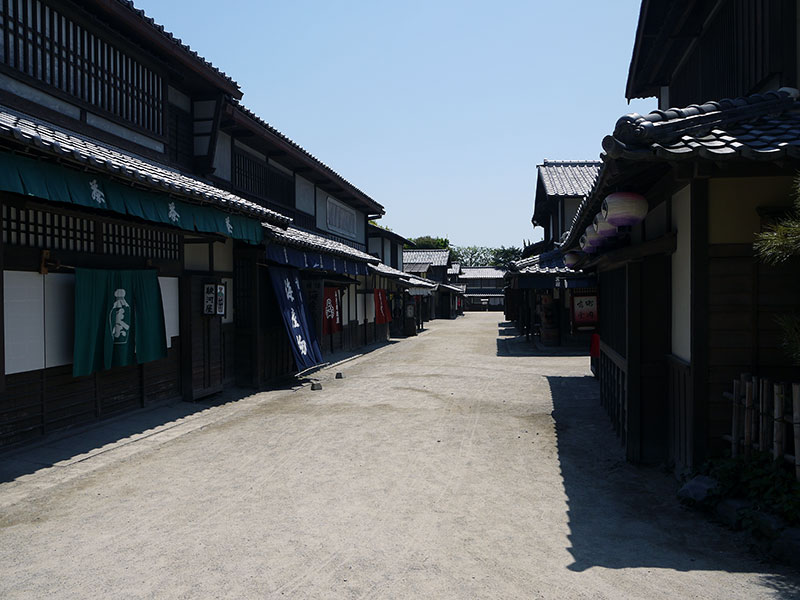
The most common time period used in the main town is the Edo period. The street set of the Edo period is used for a vast log of films since the periodical setting is changeable. Recently a TV movie film called Musashi Miyamoto 宮本武蔵, starring Takuya Kimura from SMAP, was shot here. This is despite the fact that the story’s era was a little earlier than the Edo period, when roofing tiles didn’t exist yet. So, they put some woven mats and wood on top to hide them.
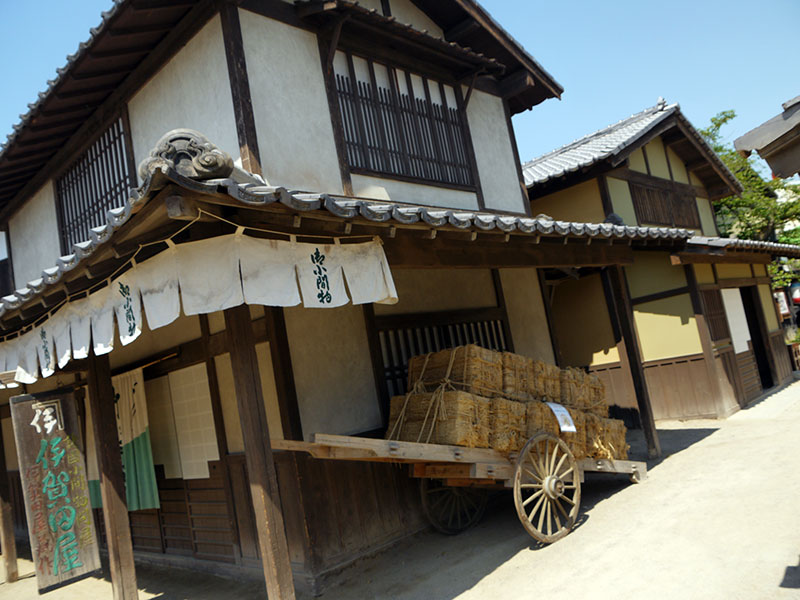
Sometimes they need to shoot in a period that’s later than the Edo period. One example is a scene from one of NHK’s morning drama series: “Carnation”. This series takes place in the Showa period. They didn’t need to change the tiles for this, but they did need to change the sliding paper doors (shoji) to glass doors. They also needed to change some of the vertically written signs to horizontal ones. This set even comes with the capability to erect poles for power lines and once the cables are thrown up the set instantly looks more modern.
Since the time period of this set is changeable, a very modern film could be filmed here as well. I heard that Kamen Rider and the samurai drama “Abarenbō Shōgun” were shot on the street at the same time (separate parts of the street though). On one side was Kamen Rider on his motorcycle and on the other was a samurai on his spectacular horse.
Anyways, my point is: this set is very flexible! Perhaps that has to do with how even in modern Japanese society we keep a lot of the traditional things as well. To shoot in modern times, or to shoot in times before the Edo era… all it requires is a few small changes and it feels like a couple hundred years have gone past. If you go to a rural area of Japan, you’ll see exactly what I mean.
A Lot Of Contrivances
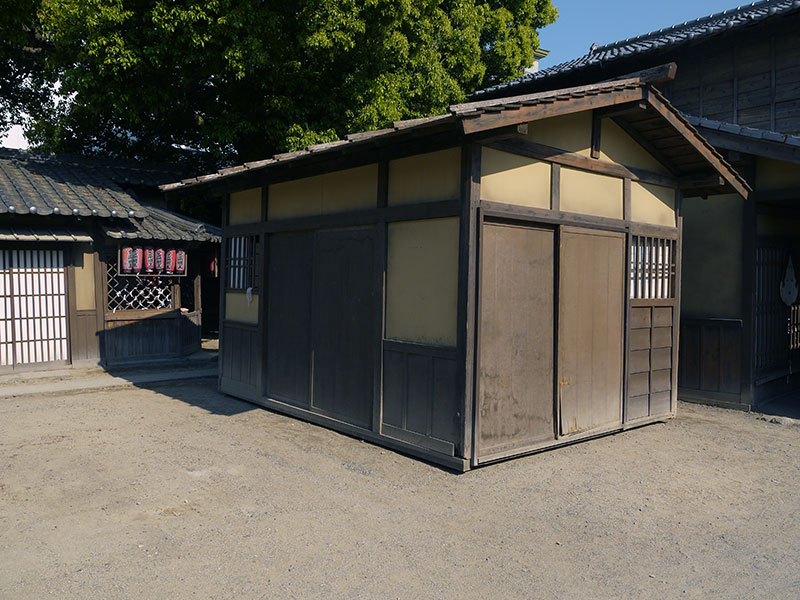
Since they have to make full use of the movie set, they have a lot of tricky modifications on each building and other things on the street. Do you see something odd about the image above? It’s slightly off the ground. In order to easily alter the set, some buildings have wheels on them, this one included. it requires just five or six adults to move.
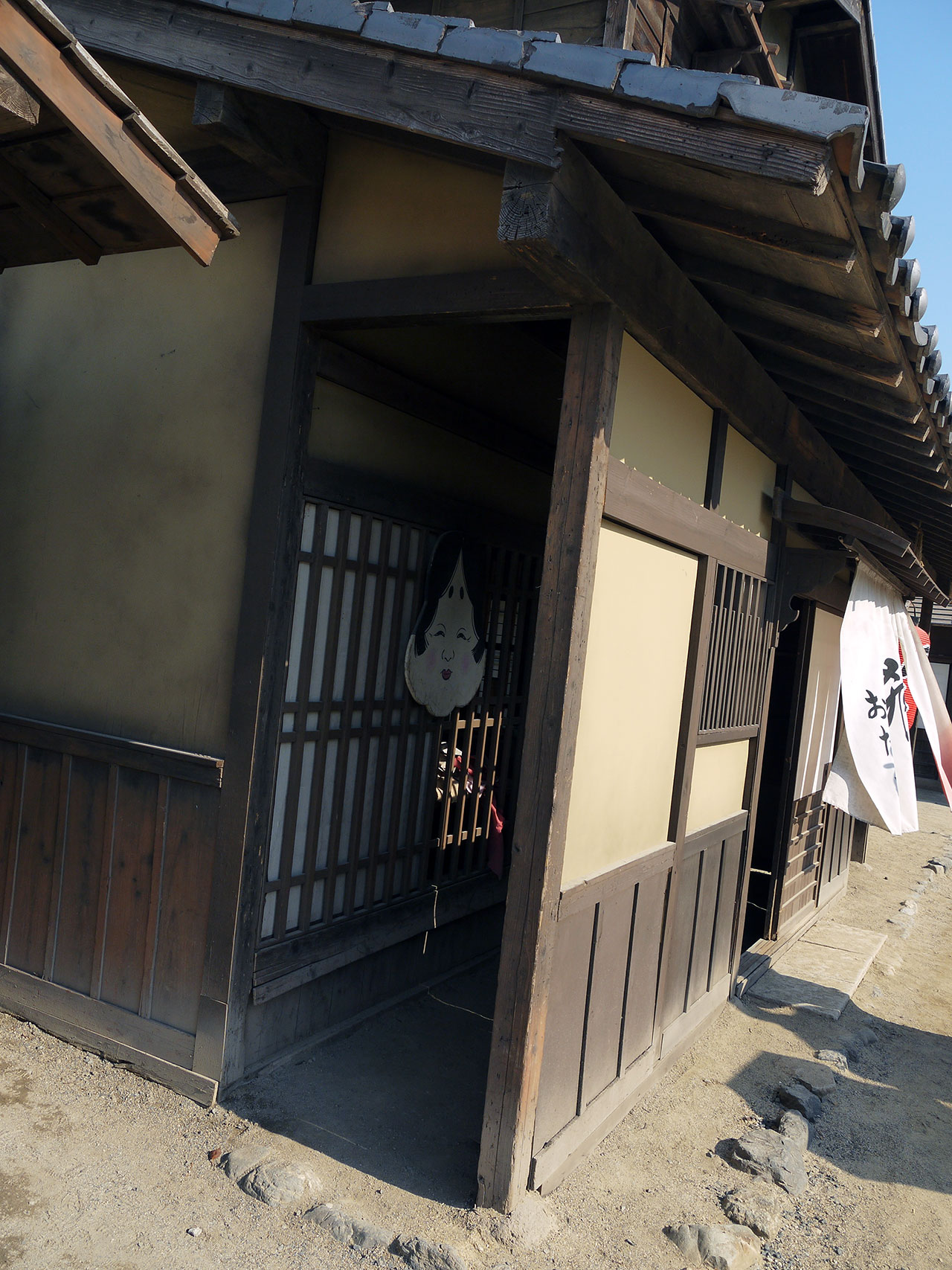
Or take this for example: You can attach a new front wall to a building to make it look like a different building. If you look carefully, you will find some buildings that have double walls on the front, like the image above. The picture of the woman’s face on the wall inside (called otafuku) can be changed out if need be too.
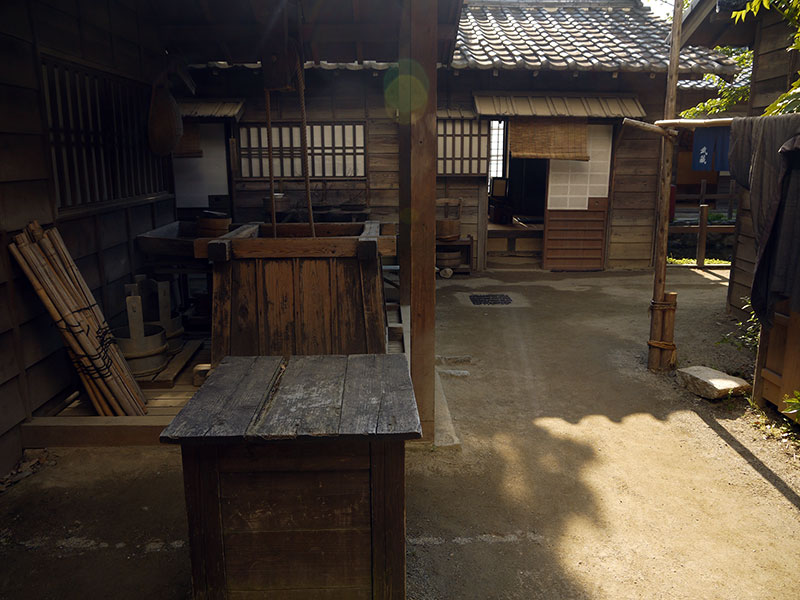
This here is a part of the Nagaya set, which are row houses from the Edo period and are now what might be called “apartments.” Because the walls between the two residences were so thin, you could easily hear an argument between the couple next door. As you can probably expect, the well in front of the nagaya is empty, so an actor/actress has to rely on their acting skills to convincingly collect water. It is also moveable so they can expand the washing area depending on the film.
People living in nagaya usually shared one well and nagaya mothers tended to be in close proximity to the well since many of their responsibilities, such as cooking, laundry, and cleaning dishes, all required water. I know it is a stereotype, but many of them apparently liked chatting about rumors and often gossiped beside the well. This is how the phrase “Ido bata kaigi 井戸端会議”, which literally means “meeting beside a well” and figuratively means “housewives gossip circle” or “water-cooler chat”, came about.
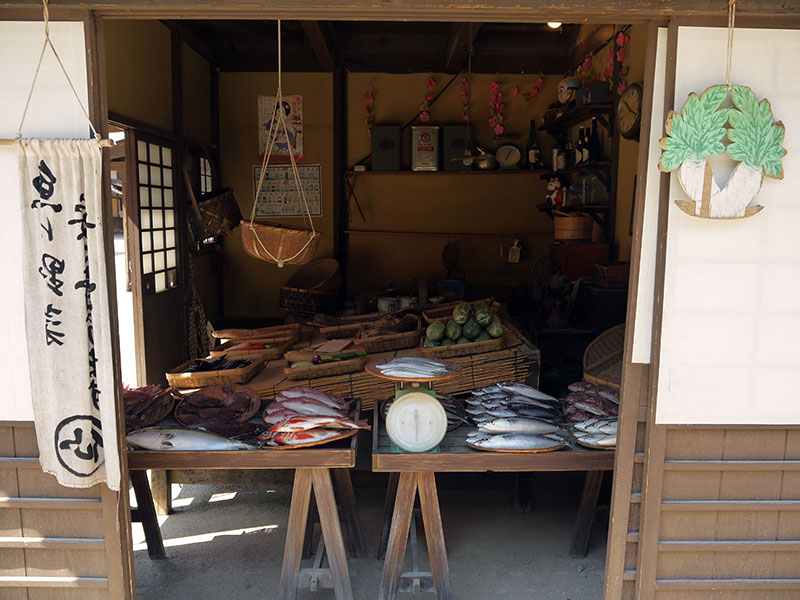
Many buildings are set up to only be used for outside shops and don’t have an interior. This one, however, has a nice inside including fresh (plastic) fish and vegetables. Looks tasty!
The Only Half Bridge

This bridge is called Nihon-bashi (Japan bridge), but if you put a different name-sign in front, it can be a different bridge too.
My photo may not really show it, but it’s actually very short and steep. (Maybe slightly over 10 degrees). It’s a little trick used back in the time when CG didn’t exist. If it was shot from a lower angle, it appears very big and long on the screen. The other side is not actually a bridge, either. It’s just steps for actors / actresses to wait their turn. Because of that, there is an absolute rule that they only shoot from this side and the actors / actresses only come from the other.
Oh, and there is no water flowing underneath. If they shoot someone jumping off the bridge, they take a shot of that person going into a river in a different place. Sometimes they go on a little trip to Saga Prefecture to take such a scene. I also heard about one time when they used a pond here in the park and combined it with a moat scene shot in a different place.
A Pond With A Dinosaur

The pond I just mentioned above happens to have a dinosaur in the middle for some reason. The dinosaur has been there since the theme park started, although now it is the third generation dinosaur. Two dinosaurs were placed there at first – a mother dinosaur with her baby. Perhaps due to wear from the elements, they were later replaced with this guy. I asked the workers his name, but sadly nobody knew it.
In spite of having the dangerous dinosaur, this pond is apparently used for a lot of scenes. The depth is different between the left side and the right side to diversify the scenes. A drowned body floating is usually shot in the shallower side, whereas someone who is killed by a samurai and drops into the water is done in the deeper side. There is usually only one set of samurai actor / actress costumes and wigs made (especially for those who will be killed or drown), so only the people who are most experienced and reliable in terms of falling into the water get these scenes.
For the big stars, the water is completely cleaned and warmed up. Needless to say, the dinosaur is forced to go hunt some sheep or something when shooting needs to be done.
Red-district Yoshiwara Street
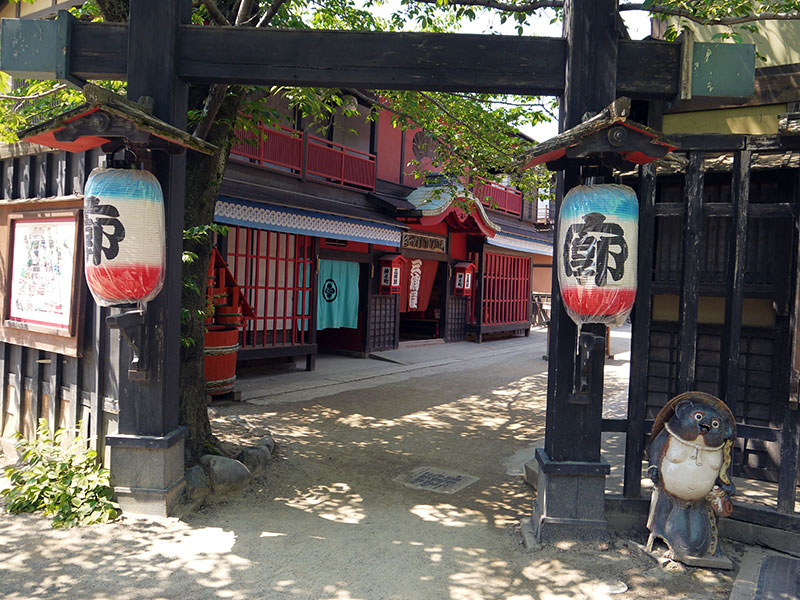
Yoshiwara was a famous licensed brothel district in the Edo period. There are two gates granting access to this street. The front gate is called “Oomon” and the back gate is called “Uramon”.
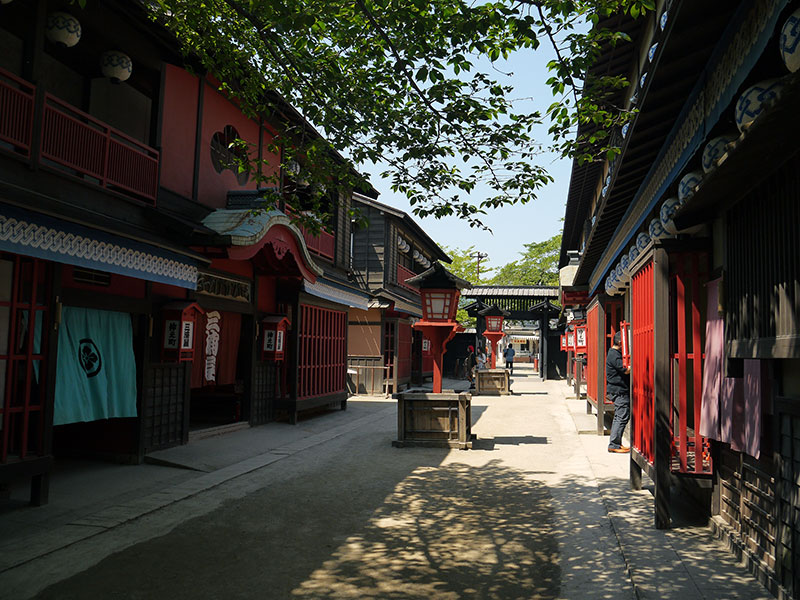
If you go in there, you’ll find the street to be very short. Yet when they shoot there, they change the signs and curtains of each house and combine them together when they edit, so that the street appears as if it is very long in a film.
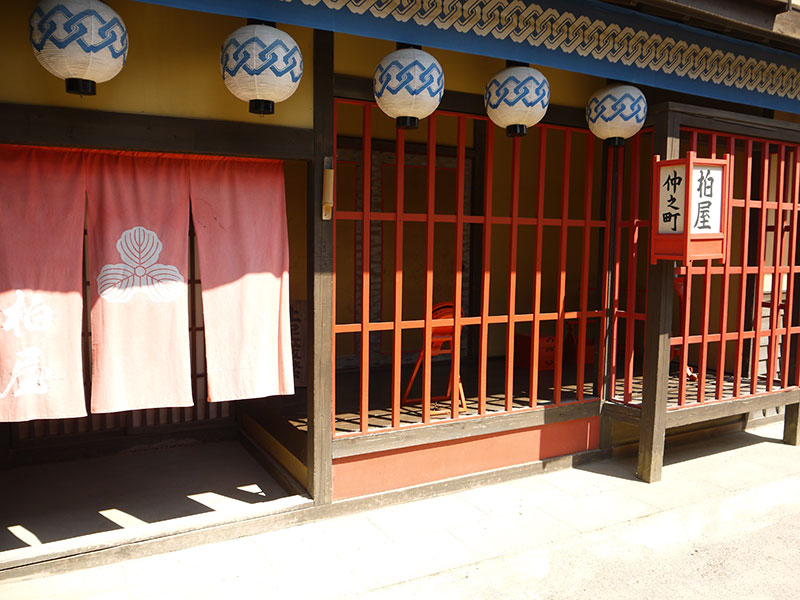
The size of some of the doorways can also be altered and is done to change the appearance of the houses.

The upstairs of these buildings are only used for shooting, but you can go into the first floor of some places. However, make sure to take your shoes off if you see this sign, dosoku-genkin 土足厳禁.
Modern Architectures
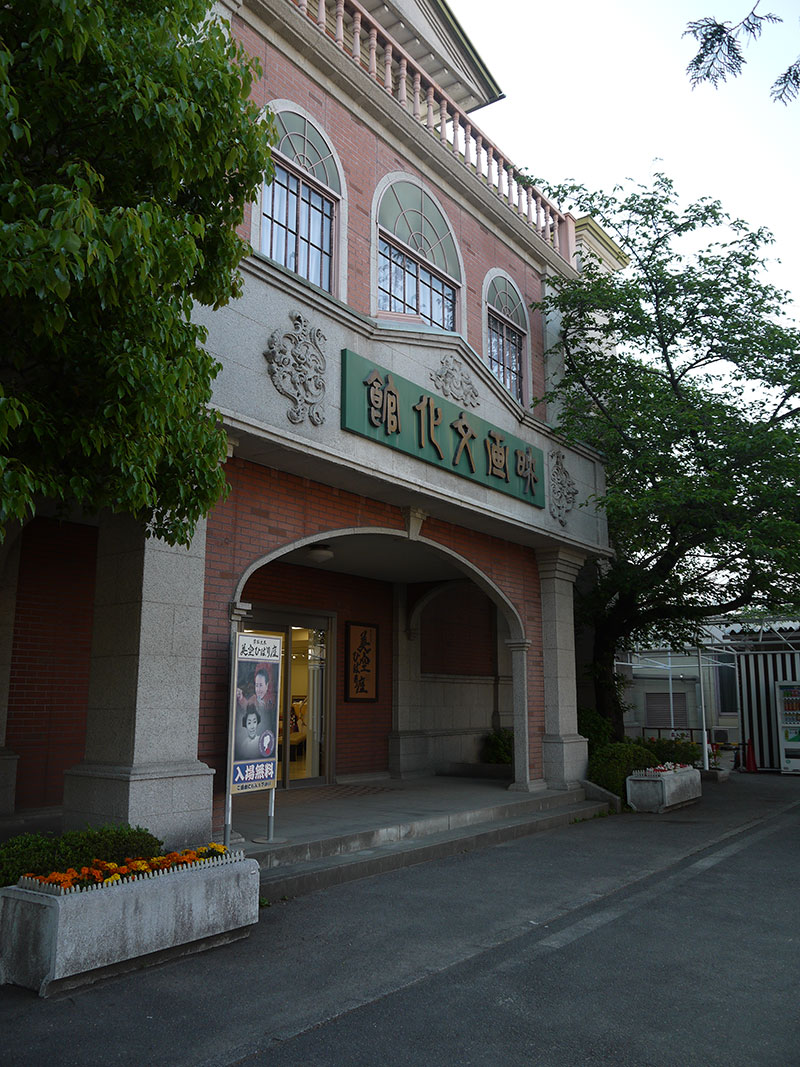
Just as a quick side note, they don’t only shoot traditional films but contemporary films as well! So, you’ll see some modern buildings that can be used as film sets.
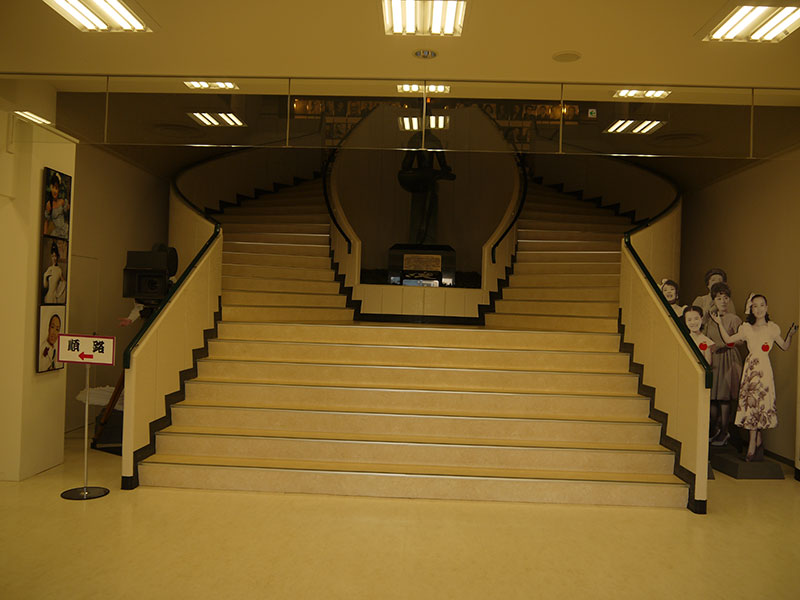
This big staircase inside the modern building pictured above is often used for scenes that often include some big-shot politician with confidential information getting surrounded by a bunch of press. You may see this staircase while watching a Japanese drama or film.
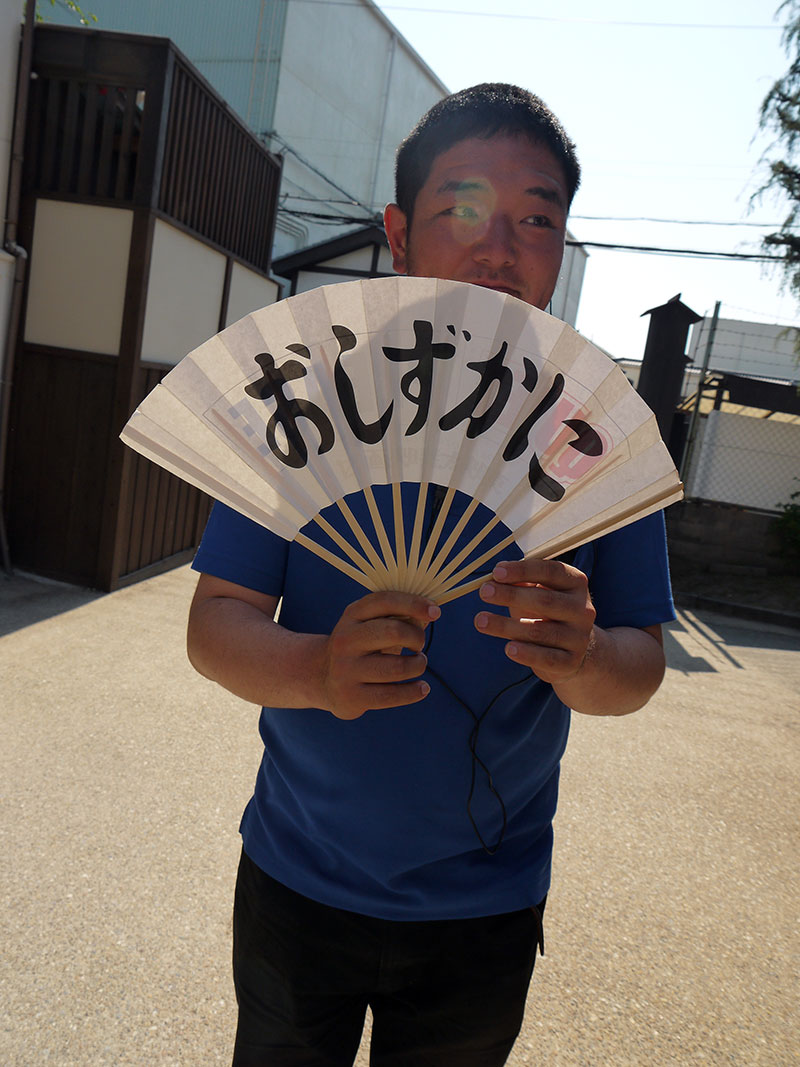
There is actually a pretty good chance of encountering an actual shooting while visiting, too. While I was there, they were shooting Ōoka Echizen 大岡越前, though photos were not allowed. While shooting, there are a lot of people standing with a fan with writing on it that says Oshizukani おしずかに which means “Quiet, please.” However, JR trains operate nearby the studio and they can’t read what the fans say. So, the assistant director always has a train schedule in hand and it is his/her job to scream, “Hey, we’ve got only 5 minutes for next train! Hurry up!”
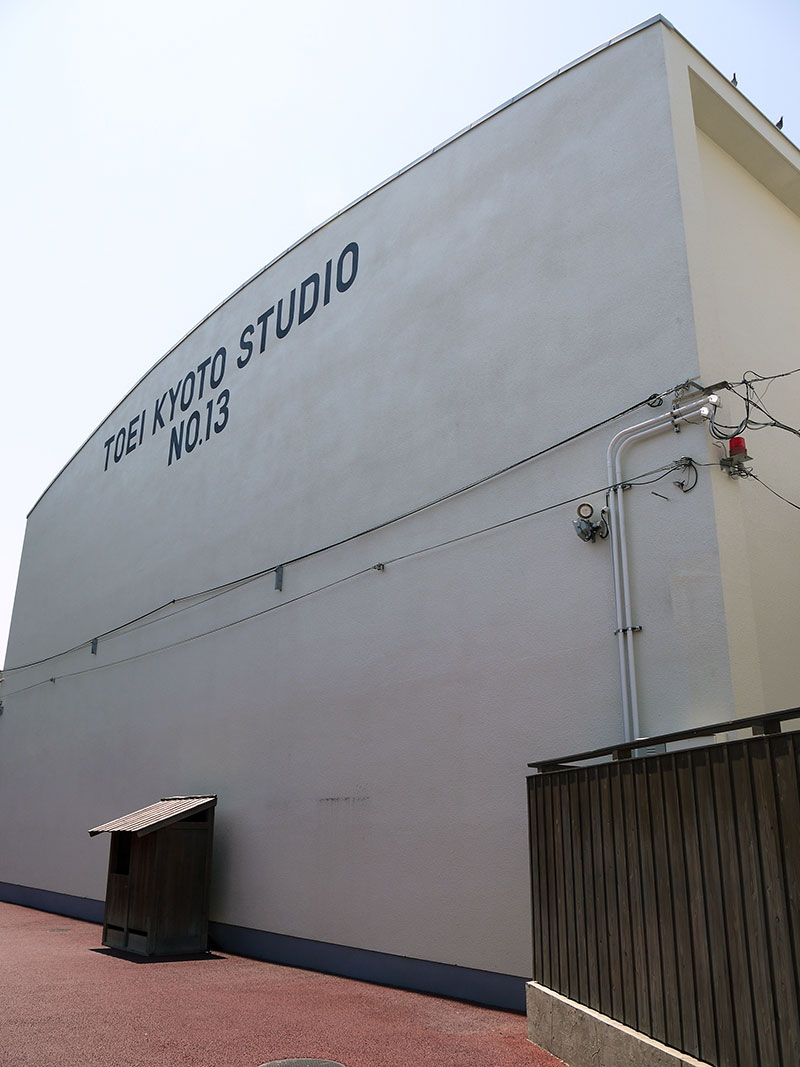
As I mentioned above, the exteriors of the buildings in the theme park are primarily what is used for shooting. Indoor shots, on the other hand, are done inside actual studios, which are located right next to the studio park. Sadly, this area is off limits to us normal people.
As you can tell from this article, I was truly interested in the film set. I hope you enjoyed this article and it encourages you to visit as well. There are a lot more than movies in this park too, including TOEI actors and actresses dressed up in historic costume, and many other touches that add to the atmosphere of a historical town. Actually, I even was able to conduct an interview one of the samurai actors, and his interview will be coming out tomorrow! Now that you know what the set and park is like, I hope you look forward to hearing more from someone who is often on the inside. If anything, you can find out how many people he has killed.
See you tomorrow!
